-
Posts
2,406 -
Joined
-
Last visited
Content Type
Profiles
Forums
Gallery
Events
Articles
Posts posted by Ian
-
-
my third example of a jeton minted for the `master masons' engaged by the king of France. This one is a younger bust of Louis XV than the previous and dates to circa 1725-30.
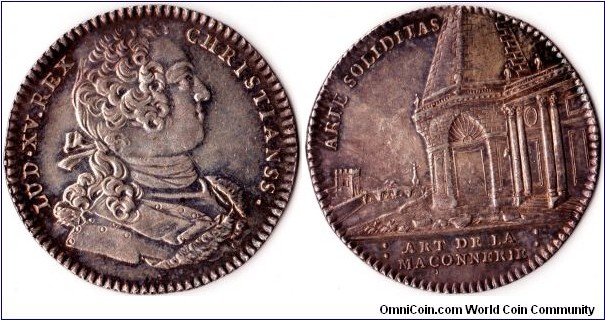
-
Nice medal and neat piece of history to accompany. A very educational post. Thanks.
-
Very nice.
 Why only one jeton for that company? Did they go out of business?
Why only one jeton for that company? Did they go out of business?Hi Art,
I've since done a little bit more research and discovered that the jeton i've acquired is in fact a variant on the original jeton issued, which has different wording on the reverse (but the same time frame). There is another jeton with the bust of Louis Philippe obverse and the same reverse as the one i have, which now leaves me wondering whether the one I have is an error ( `mule' of the two types) or a deliberate issue. I suspect the latter however. Gailhouste has published a newer version of his catalogue than the one I have on hand, so until I scrape the pennies together to update my library i'm a wee bit hamstrung for further data.
The company itself was founded in 1841. According to Gailhouste, the company ceased its operations in 1854 and its portfolio was taken over by `Le Soleil' (The Sun)
-
I've turned to stone!

I meant to say ...`whatever you do don't look at the shield!'
-
One of the key areas for jeton collecting is the French Assurance industry. This subject area is covered in `Numismatique de L'Assurance' by Raymond Gaihouste through his fairly comprehensive cataloguing of the jetons, medalets and medals produced through the ages for the various assurance financiers/ syndicates/ and latterly companies specifically covering the various insurable `risks'. Some of the pieces are miniature works of art in their own right and very scarce indeed in terms of their relatively low mintages and their ttrition through the years. I've previously posted individual jetons from various companies I have in my collection, mainly those issued by different maritime assurers. However, there are many jetons issued by the various general assurance companies. That is, those covering `life', agriculture (animal health, crop failures etc), buildings + contents (fire risk etc), transport, business failure, war, etc etc etc. A fascinating subject area that gives insight into the world of commerce and finance as well as the slings and arrows of outrageous fortune (or misfortune as the case may be). it also provides fascinating insight as to the rise and fall of various bodies (sometimes disappearing without trace), mergers, acquisitions, and business failures. Hopefully other collectors will post examples of jetons they have in this field
I've just acquired this particular jeton, an octagonal piece struck at the Paris mint for `Le Palladium', a french assurer covering the risk from fire. Typically these `jetons de presence' were issued to board members as a recognition and recompense for their participation at board meetings and the annual assembly. Some companies issued different jetons throughout their history. In the case of `Le palladium' this is the sole jeton type struck for them.
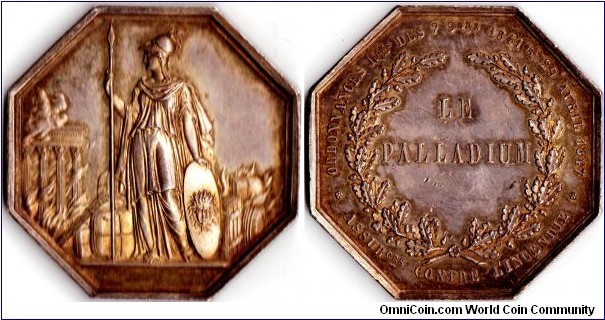
-
Many facets of French Industry and commerce saw jetons being struck and issued to board members / directors as a token recompense for their services. The jetons issued for the mining industry during the 19th century are inthe main fairly scarce and much sought after. This particular jeton is one of only five hundred jetons de presence struck in 1891 for the coalmines at Graissessac in L'Occitaine (languedoc region of France). The mines re-opened after a short closure in 1864, hence the date on the jeton. However the jetons were not struck until 1891. The mines themselves were eventually nationalised in the 1930's.
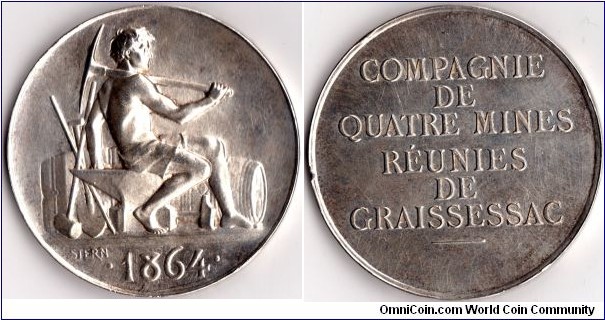
-
This coin arrived with me here in Britland today courtesy of a good friend in the US of A. Many thanks Jud! It will be much treasured.
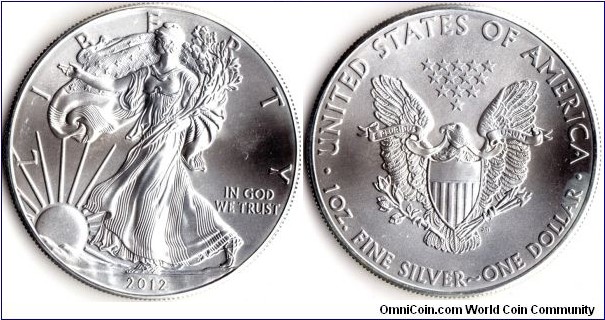
-
Is that a staff of Aesclepius with the shaking hands and the cornucopia?
I think the staff is more likely to be the depiction of Hermes, the messenger of the gods and the deity associated with commerce.
-
For me this is the Holy Grail of the Banque de France series of jetons.? This is the jeton de presence issued for the shareholders /directors of the `Caisse de Comptes Courants' on its inauguration 11th June 1796. As the parent of the Banque de France it always had a seniority but was ultimately subsumed by the larger sibling through time, the only thing retained being the obverse design (by Dumarest) of the jeton de presence which appeared on all the Banque de France jetons thereafter.
This example is darkly toned on he obverse and sports a significant cud due to a die crack at the left of the exergue (obverse) and which partially obscures the `P' in Paris
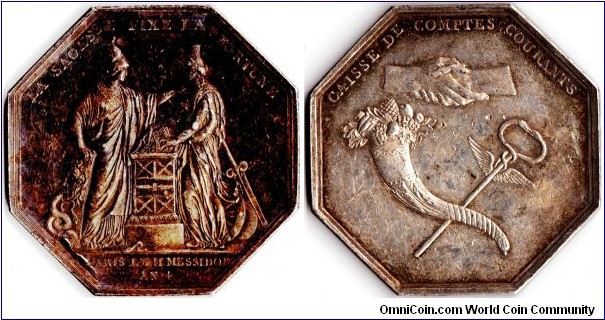
-
agree...still waiting for 1525 before heading on back
-
Nice jetons. The copper piece was either an earlier piece or a different die. Any truth to this theory?
Definitely different dies. There seems to be different views as to whether or not the silver specimens were contemporaneous with the copper ones. From a purely aesthetic
viewpoint,I agree with Constanius. The copper example was struck from a superior die.
I was hoping Vern would chip in here, as this time frame is really his territory
-
Jetons de presence dated 1792 (original strikes) issued for the Lycee des Arts in Paris during the French revolution. The first, struck in silver I bought a year or so ago. The second, struck in copper, was actually harder to find and arrived with me a few days ago.
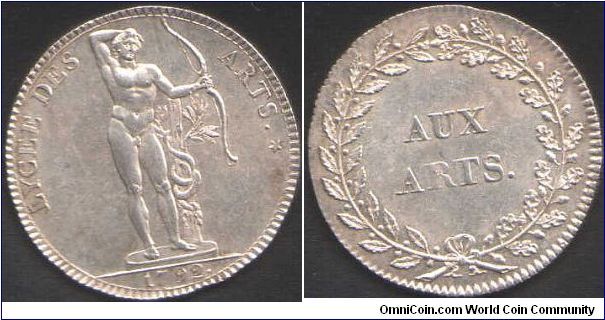
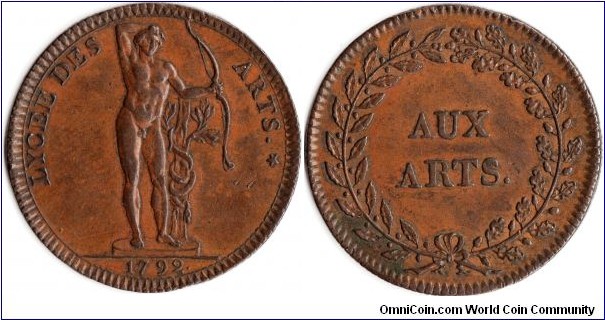
-
a silver teston of Antoine de Lorraine dated 1527.
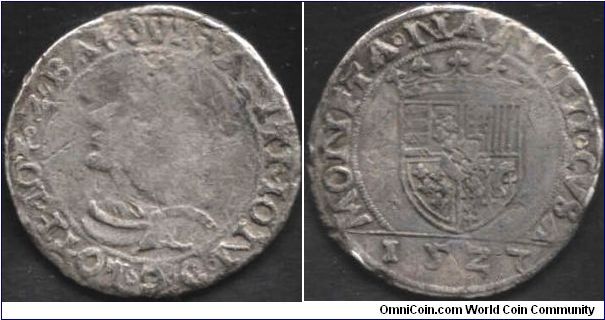
-
1531 silver grosz issued for West Prussia. Same Sigismund I that appears on the 1535 coin I posted, just a different territory within his domain.
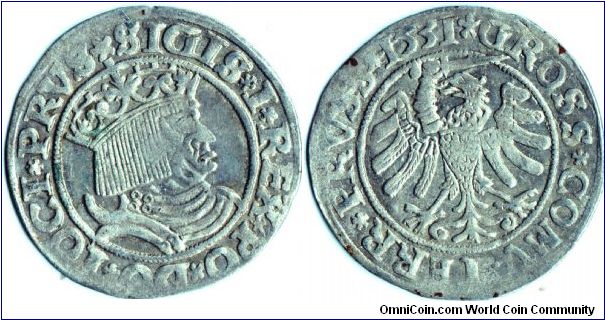
-
Purchased this one when in Poland a few days ago. Believe it or not, I was visiting Wieliczka salt mine just outside Kracow and some 150 metres or so underground they have a cafe and souvenir shop. This particular coin was on sale. Just had to buy it.
1535 dated silver Grosz of Sigismund I of Poland. A nice portrait coin.
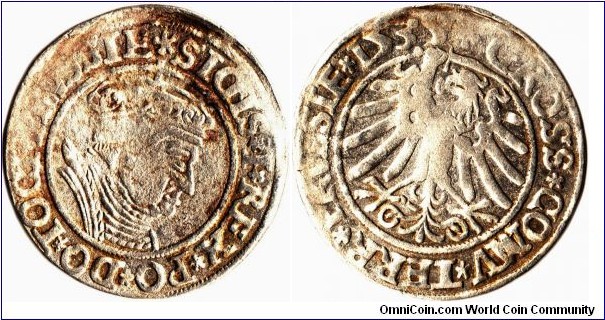
-
I've got a 1535. Will post it when i get home later today.
-
OK, this one is a silver teston of Francis I of France. It does not have an arabic date, but according to Ciani 'Les Monnaies Royale Francaises' (Paris 1926) this coin was minted by mint master Pierre Le Maistre at Cremieu in 1538.
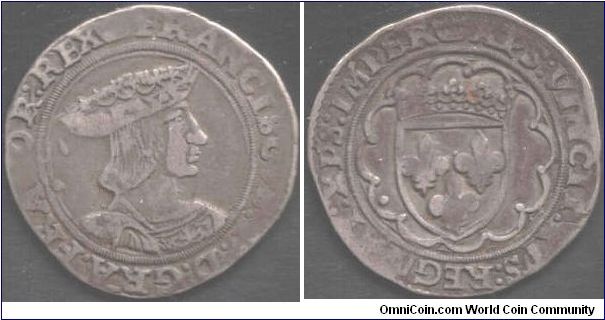
-
Another couple of jetons issued for various maritime assurers in France.
The first just arrived with me today and was near the top of my `wants' list. It was issued for the `Comptoir Maritime' and is R1 in terms of rarity
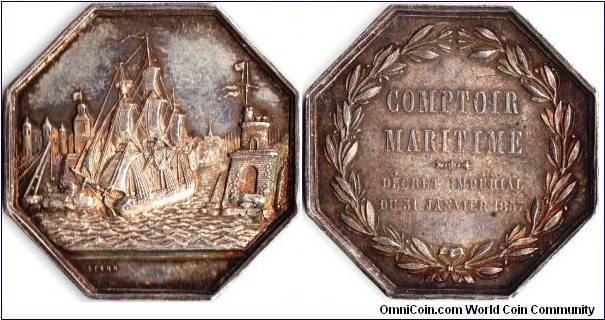
The second is another difficult to find jeton which was issued for a syndicate of assurance companies in Marseille that covered maritime risks (1860)
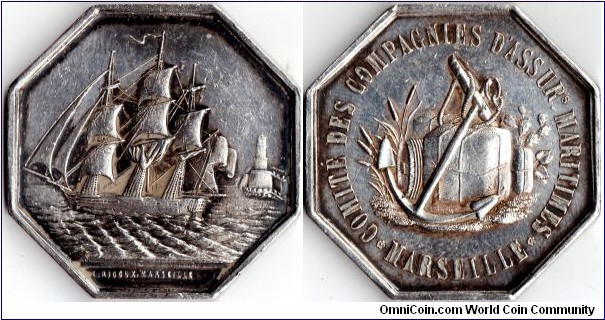
The third is a copper jeton issued for La Centrale in 1854. I have one struck in silver, but the copper issue is much more scarce.
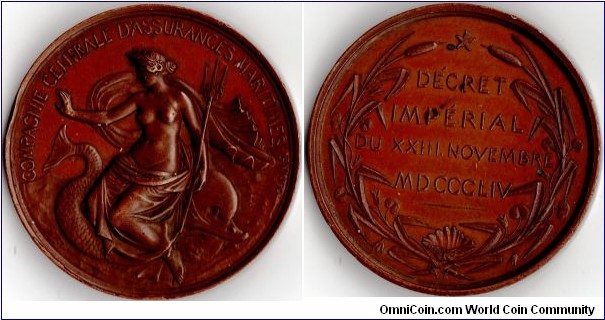
-
1539 is posted
 scroll up! Now 1538!
scroll up! Now 1538!Ben
so it is.. onwards and backwards!

Ian
-
It does look more like 1514 to me but I can't explain the character after the 4. Don't know enough about the coin type and wouldn't argue in any event
 . Why don't we just go with it being 1540 anyway, and if someone else comes up with a 15 40 we would of course be more than delighted to see it. 1539 anyone?
. Why don't we just go with it being 1540 anyway, and if someone else comes up with a 15 40 we would of course be more than delighted to see it. 1539 anyone? -
Why "140"?
I'm also intrigued as to why 140? Is that actually delineating it as being a bona fide `1540'?
Ian
-
I see that right regal Prince Albert of Brandenburg is popular with my fellow coinpeop's.

Here's 1541
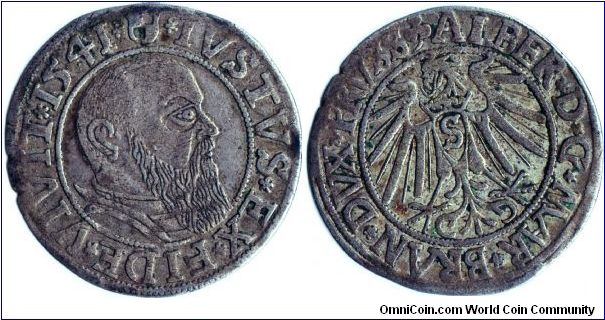
-
a schilling from Livonia dated (15)47
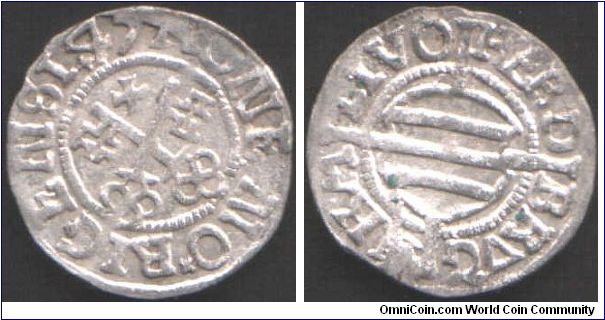
-
It was quite a momentus occasion for the Scottish merchant classes and royalists of the time who gained the most from cow-towing to the tails of the english mantle . Edinburgh landmarks bear testament to that. However, I suspect (but cannot attest the same) that the average Scot was hissing and seathing at the visit. We Scots have long (racial) memories
 .....even today we still curse the English for their part in the massacre at Glencoe. Having said that, if you asked the average Scot to point to Glencoe on a map, I shudder to think what the response would be.
.....even today we still curse the English for their part in the massacre at Glencoe. Having said that, if you asked the average Scot to point to Glencoe on a map, I shudder to think what the response would be.Some things never change...from the old cattle rustling times pre-Edward I to present time we remain (as ever) more than happy to alleviate the burden placed upon an Englishman from the contents of his wallet.
Nice medal of George III's wayward and reckless son, who was no credit to either his father or the UK..... or anyone else come to think of it. Mind you, he did have more than his fair share of creditors.


Numismatique de L'Assurance
in Exonumia (Tokens, Medals, etc) Forums
Posted
This is a high grade example of a jeton issued by the `Syndic des Tontines', one of France's (and the world's) first life assurers. I will leave you to research what a `Tontine' is but suffice it to say it was the forerunner to modern day principles in life assurance.
The syndicate concerned existed between 1700 -1770. Although none of its jetons were dated, the date of each issue is broadly determinable by the style of bust of the king. This one is the last type to be issued circa 1760-70)